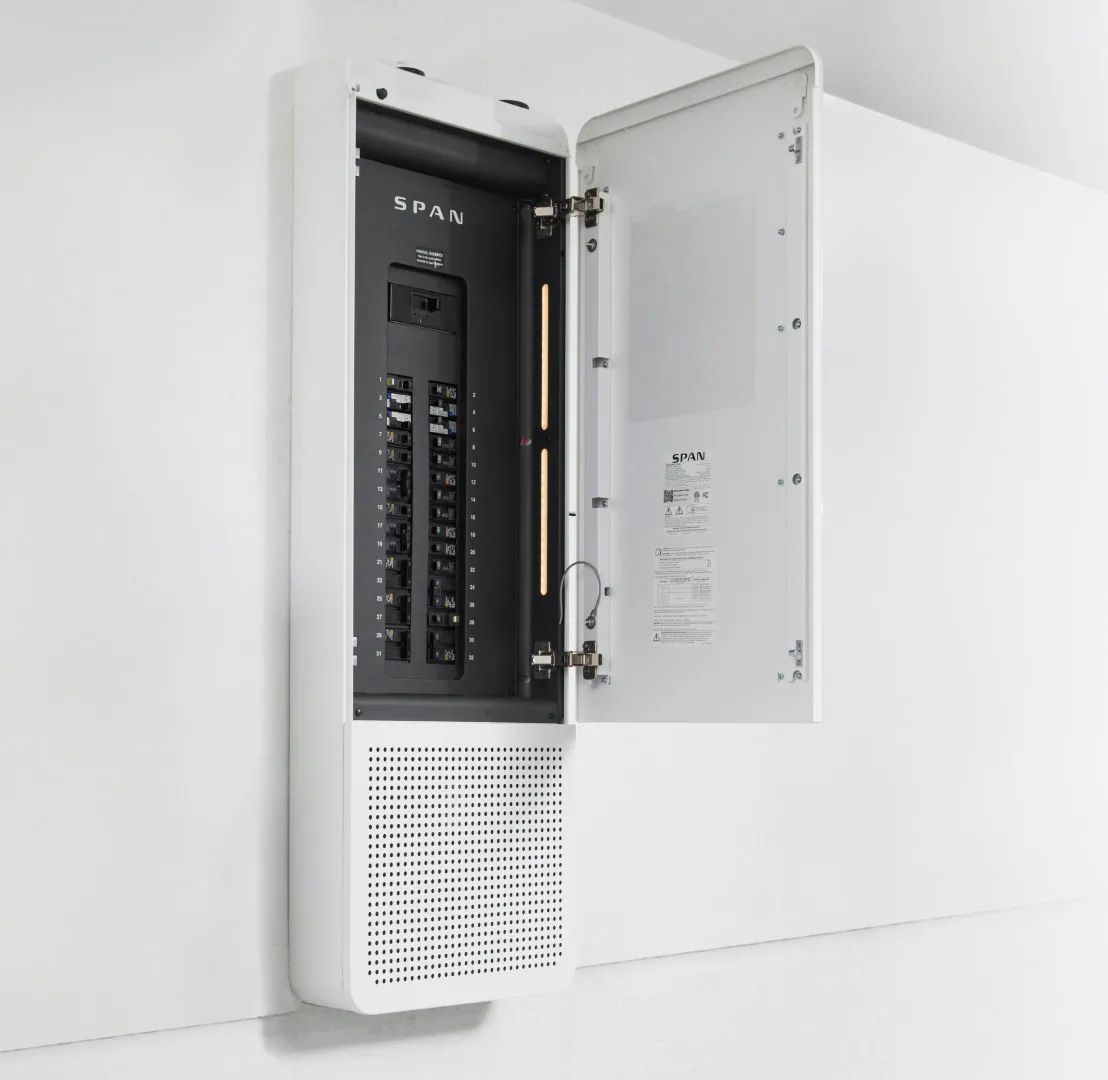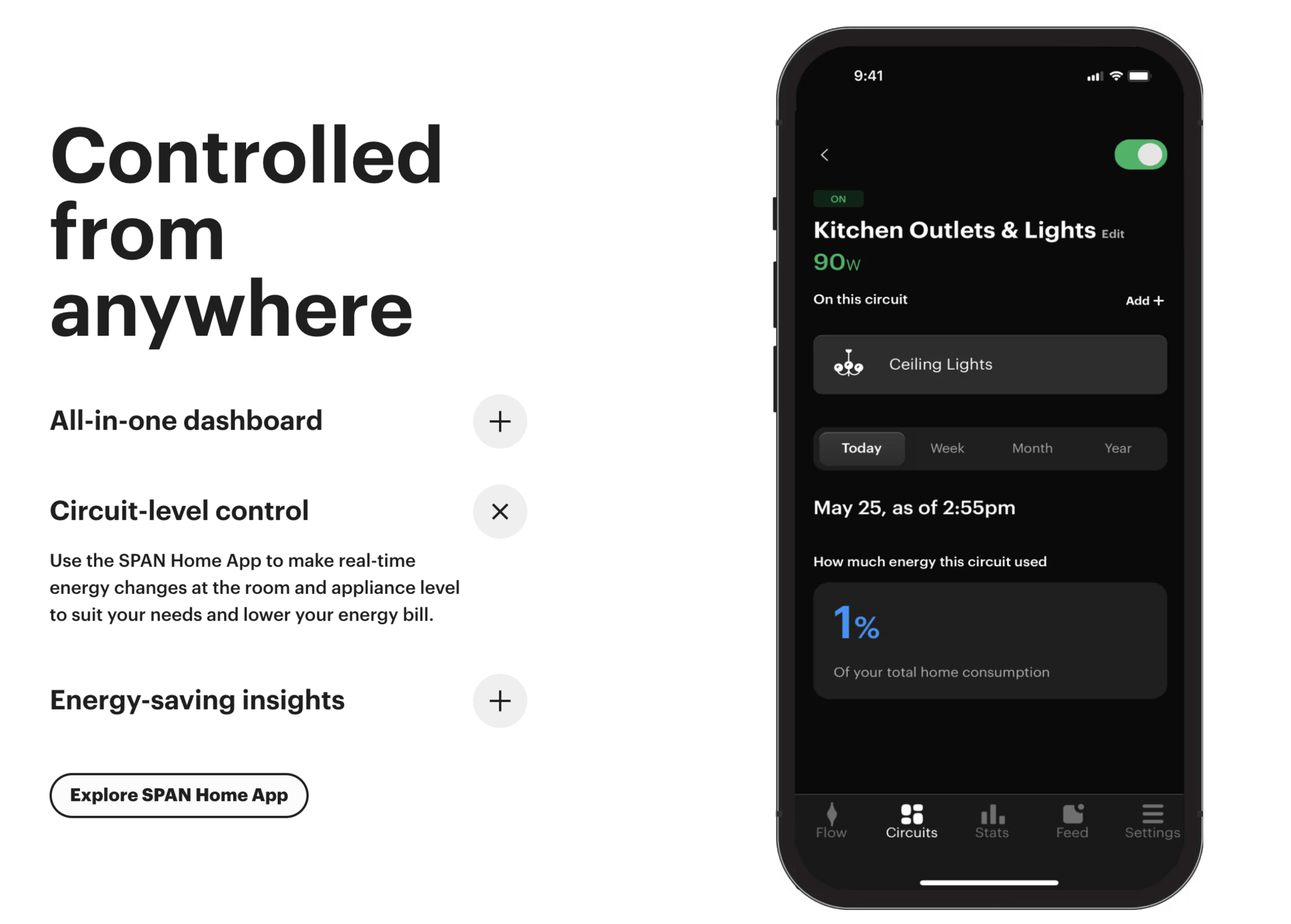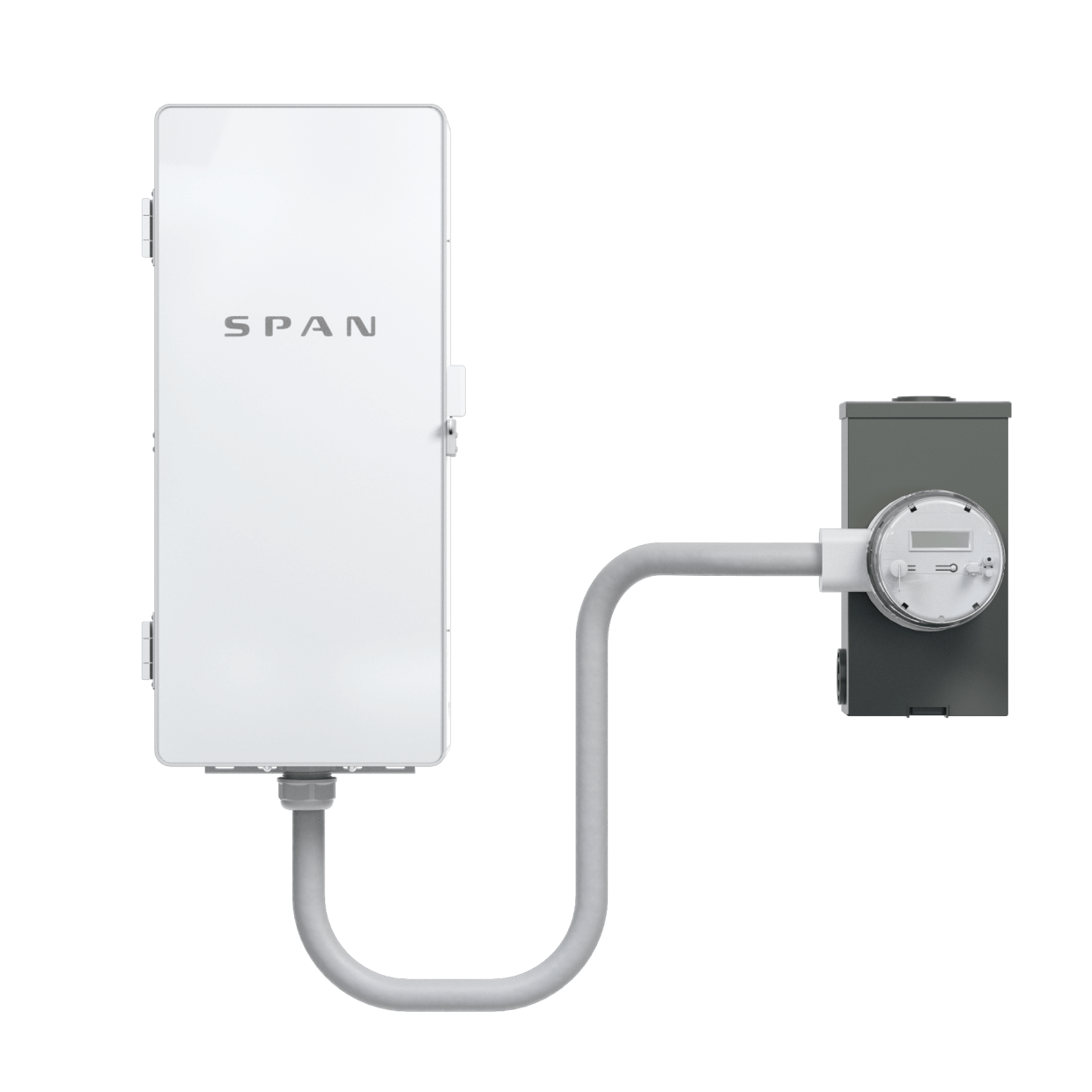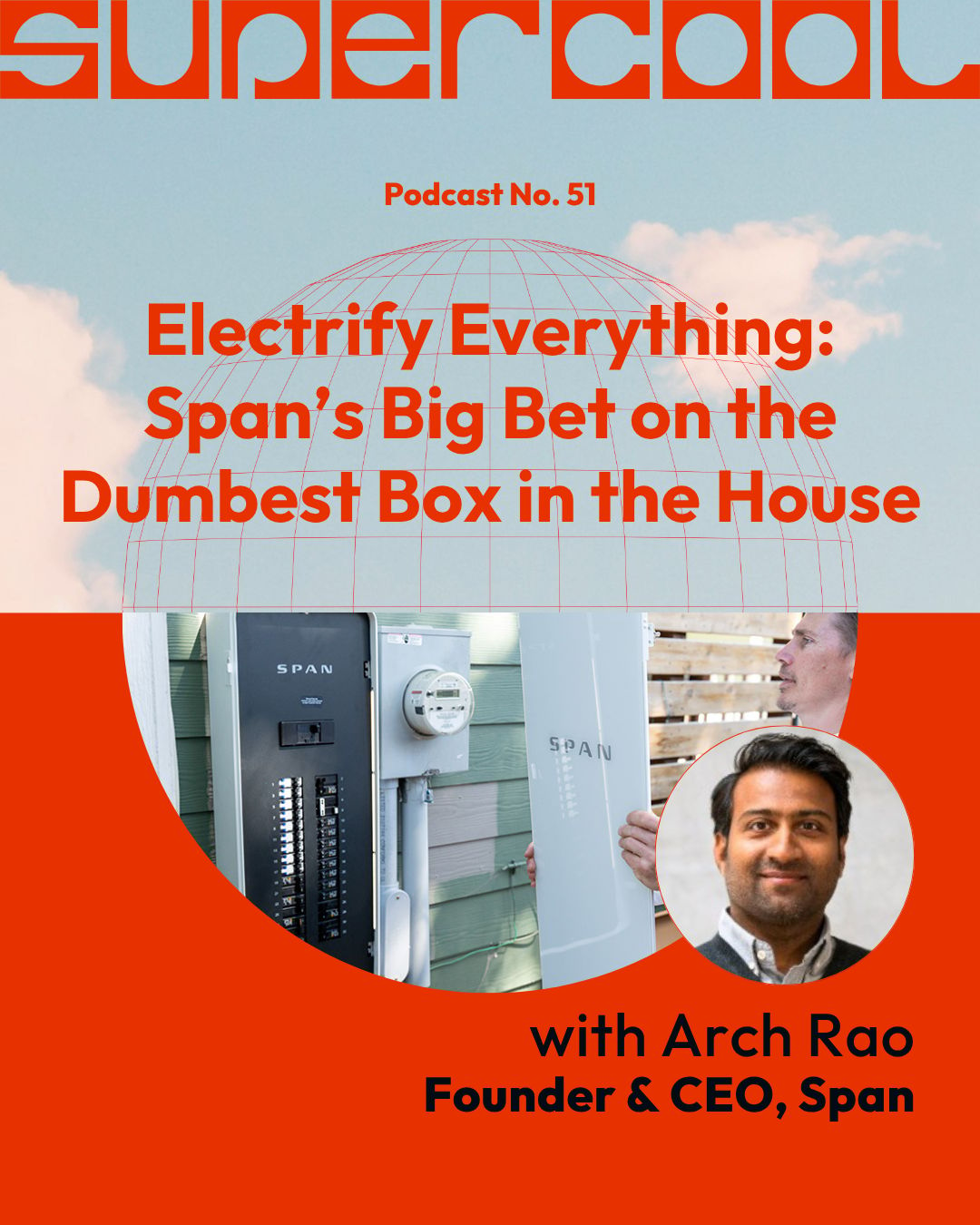- Supercool
- Posts
- 🌐 Electrify Everything: Span’s Big Bet on the Dumbest Box in the House
🌐 Electrify Everything: Span’s Big Bet on the Dumbest Box in the House
Span is the electrification upgrade that’s cheaper, faster, and better.
The Electrification Upgrade Starts in the Basement
Solving climate change, we’re often led to believe, is complex. There are a number of reasons for pushing this view: it stalls action on the one hand and helps with fundraising on the other.
However, as clean energy technologies catch up and begin to surge past fossil fuels in terms of adoption and cost, a more straightforward view is gaining traction.
To reach the low-carbon future, we must accomplish two things:
Generate loads and loads of clean energy: solar, wind, hydro, and nuclear.
Electrify everything: data centers, skyscrapers, cars, homes, and factories.
Everything must plug into the grid, and the grid must be powered by clean energy.
Simple? No.
Straightforward, understandable, and actionable? Definitely.
So, naturally, everyone says we need more grid. But Arch Rao says we’re barely using the one we’ve got.
That’s a contrarian view to what Tim Holt, Board Member and Head of Grid Technologies at Siemens Energy, told me on Supercool this past April.
He put it this way: It took the U.S. 150 years to build the grid we have today. Now we have to double it in the next 15 years. And then double it again in the 15 years after that.
He’s right. Electricity demand is rising fast. EVs. Heat pumps. AI compute. Industrial reshoring. The electric future is arriving faster than expected—and the grid can’t keep up.
But Arch Rao is focused on a different part of the elephant.
Where most see a supply crunch, he sees a utilization gap. The problem isn’t just that the grid is underpowered. It’s also that it’s underused—built for rare peaks, but mainly sitting idle.
We only use about 40–42% of the grid’s capacity on average.
That’s not a power shortage. That’s a design flaw. And fixing it doesn’t start with trillion-dollar transmission projects.
It starts with something far less glamorous—tucked in a basement corner, half-forgotten and full of consequences.
2. The Real Electrification Bottleneck
It’s not a lack of public support or too few renewables. It’s, of all things, the electrical panel.
Most people never think about the grey box until the power goes out or something plugged in upstairs won't work.
Only now, we purchase the EV. The heat pump. The induction stove. Then, we’re hit with a brutal surprise: our home can’t handle it.
The utility says you need a full-service upgrade before your new electric-powered car or appliance can connect.
That means a new panel. Dirt dug up. Wires replaced. Thousands of dollars out of pocket and months of waiting.
Nearly two-thirds of U.S. single-family homes—about 48 million—still run on outdated 100-amp service. The entire home can only draw 100 amps at a time. Not enough to run a heat pump, an EV charger, and an induction stove simultaneously.
It’s infrastructure invented for the 20th century—a world without electric vehicles, electric-powered appliances, and high-powered compute at the edge.
Arch Rao saw it coming. So he decided to fix it.
3. Why Arch Built Span
Before founding Span, Arch Rao was Head of Product at Tesla Energy. He helped launch the Powerwall and Powerpack—Tesla’s flagship battery systems for homes, businesses, and the grid.
And he kept running into the same problem.
Customers would install a battery or EV charger—then find out their panel couldn’t handle the load. Or during an outage, the system had no idea what mattered—powering the garage freezer instead of the family refrigerator.
The bottleneck was not the tech. It was the infrastructure.
So he founded Span and introduced a smart, software-enabled electrical panel built for the demands of an all-electric home.

The Span Panel replaces the grey, analog electrical panel.
4. The Electrification Unlock
Span replaces the analog breaker box with a digital interface that understands how modern homes utilize energy.
It gives homeowners real-time visibility, circuit by circuit.
They can turn things on or off from their phone.
Set priorities during an outage—so the fridge stays on, and the garage freezer waits.
It’s precise and automated. And it gives homeowners an unprecedented level of insight into what’s happening behind their own walls.
“We can see when your refrigerator door has been left open. We can see when your curling iron has been powered on and left on for longer than 10 minutes,” says Arch. “We can detect when your air conditioning compressor is becoming less and less efficient.”

The Span app shows the power individual outlets are drawing.
Span also integrates with solar, storage, and smart devices. It manages load intelligently, connects with the grid, and gives homeowners control over how—and when—they use electricity.
Most importantly, it makes electrification practical.
✅ No rewiring delays
✅ No surprise service costs
✅ No abandoning clean upgrades because the house isn’t ready
Span removes friction for homeowners. It helps utilities avoid expensive overbuilding. It transforms the panel from a passive endpoint into an active node.
“There is no other device that is literally embedded in your walls and can be a digital gateway for the next 30 years, except your panel,” says Arch.
5. From Better Homes to a Smarter Grid
The Span Panel is already in tens of thousands of homes across the U.S. The company now works directly with many of the nation’s top homebuilders like Pulte—making electrification viable as soon as the new homeowners move in.
That means:
• EVs without surprise panel upgrades
• Heat pumps without rewiring delays
• Solar + storage with full visibility and control
Here’s how Arch describes Span’s impact on decarbonization:
“There are three layers of transitions: gas to electric, electric to better time-of-use electric, and then to self-generated electric.”
Span was designed to enable that exact sequence:
Make it easy to switch from gas to electric
Shift consumption to when clean power is abundant
Seamlessly integrate solar when it makes economic sense
Each of these cuts carbon in the real world—starting inside the home. And the demands on that home are only growing.
“I’m forecasting that all of us will have a high-power compute on the very edge,” says Arch.
AI. Gaming. Automation. More electricity. More devices. More complexity.
Span gives homeowners the control and capacity to keep up—with the panel doing the work.
6. Built for the Grid We’ve Got
The next evolution of Span isn’t just about modernizing homes. It’s about giving utilities the tools to meet rising demand proactively.
Utilities install Span Edge at the home’s electric meter, providing real-time visibility into energy use—across homes, blocks, and entire neighborhoods.

The Span Edge installs at the home’s meter.
Instead of replacing transformers, expanding substations, or stringing new wires, utilities can intelligently manage demand right at the local source.
They can deliver more electricity, keep infrastructure costs in check, and maintain rate stability. All while speeding up electrification.
And homeowners benefit, too—even without a Span Panel.
Span Edge reduces outages, eases equipment strain, and unlocks electrification-ready service. It supports enough circuits to power EVs and electric appliances right out of the box.
“We’re grafting to hosts. We’re saying, here’s a piece of technology that can be deployed as a rate-based asset,” says Arch.
That means Span Edge can be treated like core infrastructure—the same way a utility would invest in a substation or transformer. A long-term asset. Not a workaround.
That’s why Span is rapidly becoming the upgrade that enables all the other upgrades.
Supercool Takeaway
Span is the enabling technology we didn’t know was missing.
Its smart panels replace the old grey box with a digital platform that manages energy use, optimizes the grid, and enables full-home electrification.
It’s a small switch that unlocks a big shift.
And it gives utilities a faster, more affordable way to deliver more power, without tearing up streets, spending billions, and passing the cost on to customers.
Span makes it possible to scale a low-carbon future using the grid we’ve already got.
Listen to this podcast episode on Apple, Spotify, YouTube, and all other platforms.

↓
This Week’s Supercool Sponsor

Built to last. Designed to inspire.
Mill is sleek, sculptural, and capable of exerting 288 lbs of force. Each food recycler is crafted by hand in North America and engineered by leaders from Apple and Nest.
Mill transforms your uneaten food into nutrient-rich food grounds and compost, for use at home and in your community.
Buy, finance, or rent your Mill Food Recycler.
↓
Stat of the Week: 42%
That’s the average grid utilization across the United States. Despite headlines about stressed infrastructure, the grid isn’t maxed out—it’s underperforming. Most of the time, capacity sits there, idle.
Equation: Total Generation / (Generation Capacity × 8,760 hours)
Quote of the Week:
The first time we saw a Zillow ad that was advertising a home powered by Span was a pinch me moment. That was pretty cool. You know, it's good selling point.
↓
Electrification is critical to the low-carbon future.
But no one wakes up thinking, “You know what my home needs today? More electrification.”
Fortunately, the electric versions of what we want aren’t just cleaner. They’re quieter, smarter, and more efficient—designed for an upgraded lifestyle.
People aren’t ditching natural gas and propane because it’s virtuous. They’re doing it because what comes next is better.
Here are five products leading the shift.
🔥 Impulse Labs: Power in the Cooktop

Most induction stoves need a 240 V hookup. Impulse’s cooktop doesn’t. It plugs into a standard outlet—because the battery’s built in. That battery also lets it boil water in under 40 seconds, keep cooking during outages, and even help stabilize the grid.
🔌 Copper Charlie: The Plug‑In Powerhouse

Copper’s Charlie is a full 30″ induction range with a built-in 5 kWh battery that plugs into a standard 120 V outlet—no rewiring needed. It dishes out high-output cooking, charges smartly using off‑peak/renewable power, and can cook 3–5 meals during an outage—bringing gas‑level performance without the gas.
🌍 Dandelion: Geothermal Without the Headache

Dandelion swaps into your existing ducts, stays whisper-quiet with no outdoor components, and taps into steady ground temps for year-round comfort. Its streamlined design cuts installation hassle—and with rebates, you get geothermal efficiency without the sticker shock.
💧 Rinnai REHP Series: The Elegant Heat Pump Water Heater

Endorsed by construction tech pro Matt Risinger, the Rinnai REHP takes heat out of the air—and puts savings in the water tank. It’s up to 4× more efficient than traditional electric models, runs whisper-quiet, and fits cleanly into tight mechanical rooms. Duct-ready, rebate-eligible, and backed by a 10-year warranty, it’s one of the most efficient water heaters on the market.
⚡ Pila Mesh: The Game-Changing Plug-and-Power Home Battery

Not here quite yet, but we couldn’t keep quiet—Pila’s Mesh battery is a breakthrough. It simply plugs into any 120 V outlet, no electrician needed, and gives you silent, smart backup power for your fridge, Wi‑Fi, or lights. Modular mesh networking lets multiple units coordinate across your home for grid-savvy, outage-ready energy.
↓
Where Supercool traveled this week:
Podcasts:
🌐 Most Podern with Alex Yuen and Libo Li: How Climate Solutions are Making Life Better (Not Worse)
🌐 Less Talk, More Action with Joel Cesare and Owen Barrett: The Supercool Way: Solving Climate Change with Profit and Purpose
🌐 Venture Daily with Jackson Fordyce and Josiah Simons: Trump’s Mining Bill Kills Demand
🌐 Today in Space with Alex Orphanos: Climate, Innovation and Entrepreneurship
🌐 Nedas Live with Ilissa Miller: Driving Sustainability in Digital Infrastructure with Josh Dorfman
↓
Interested in Advertising with Supercool?
Connect with future-forward decision-makers seeking next-gen climate innovations. Reach out to discuss how Supercool’s platform can help. Just hit reply to this email.
↓
Not yet subscribed to Supercool?
Click the button below for weekly updates on real-world climate solutions that cut carbon, boost the bottom line, and improve modern life.
🌐